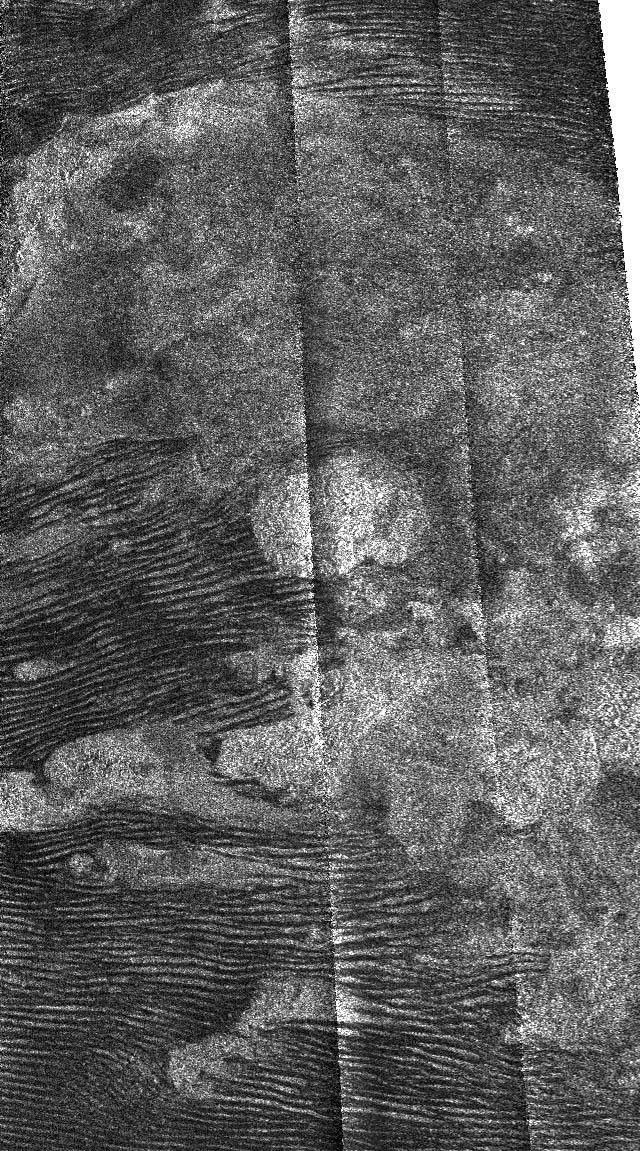Titan Features and Interactions
| PIA Number | PIA09181 |
|---|---|
| Language |
|
This radar image, obtained by Cassini's radar instrument during a near-polar flyby on Feb. 22, 2007, shows dunes surrounding a bright feature on Saturn's moon Titan.
Dunes have been previously seen on Titan, so far concentrated near the equator. They are thought to be composed of small hydrocarbon or water ice particles -- probably about 250 microns in diameter, similar to sand grains on Earth. These are formed into dunes by the prevailing west-to-east surface winds. Because of the shape and length of the dunes, they are probably "longitudinal" (lying in the same direction as the average wind) rather than transverse dunes, which form across the wind and are more common on Earth.
There are several kinds of interaction between the dunes and the brighter features in this image. At the left, the dunes seem to be covering the bright material, while at the center and right, they seem to be terminated against it. At the lower center and lower right, they flow around it (see also Swimming in Dunes and Dunes and More Dunes). These various interactions will help us to determine the nature of both of these features.
This image was taken in synthetic aperture mode at 700-meter (2,300-foot) resolution. North is toward the left. The image is centered at about 3.5 degrees south latitude and 37.3 degrees west longitude.
The Cassini-Huygens mission is a cooperative project of NASA, the European Space Agency and the Italian Space Agency. The Jet Propulsion Laboratory, a division of the California Institute of Technology in Pasadena, manages the mission for NASA's Science Mission Directorate, Washington, D.C. The Cassini orbiter was designed, developed and assembled at JPL. The radar instrument was built by JPL and the Italian Space Agency, working with team members from the United States and several European countries.
For more information about the Cassini-Huygens mission visit http://saturn.jpl.nasa.gov/home/index.cfm.
Credit: NASA/JPL





























